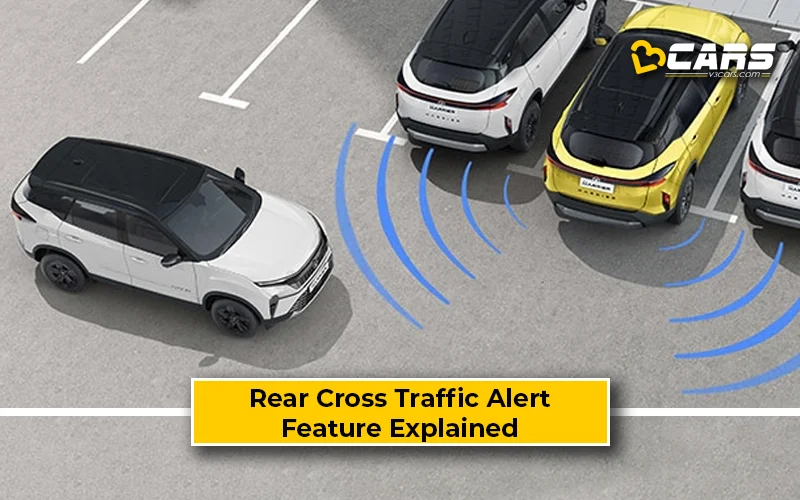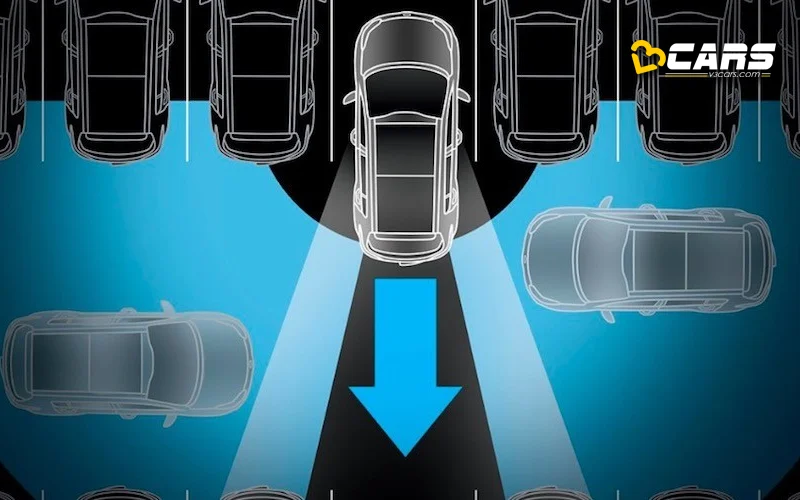Rear Cross Traffic Alert – ADAS Feature Explained
Reversing out of a parking spot, especially in a busy area, is one of the most stressful manoeuvres a driver can make. Hidden obstacles, distracted pedestrians, and oncoming vehicles can be completely invisible until it’s too late. Fortunately, a piece of ADAS technology known as Rear Cross Traffic Alert (RCTA) is here to help. In this article, we’ll break down what this feature is, how it works, and why it’s becoming an essential component of modern car safety.

What Is Rear Cross Traffic Alert (RCTA) In Cars?
Rear Cross Traffic Alert is a safety system designed to warn the driver of approaching vehicles when they are backing out of a parking space. Working in tandem with the rearview camera and parking sensors, RCTA acts as an extra pair of eyes, scanning the area that is often obscured by other parked cars. This system is crucial for preventing collisions in crowded parking lots, driveways, and other areas where your side and rearview mirrors have a limited field of view.
How Does Rear Cross Traffic Alert Work?
Rear Cross Traffic Alert uses a combination of sensors, usually the same radar or ultrasonic sensors located in the rear bumper that are used for Blind Spot Monitoring. When the driver engages the reverse gear, these sensors begin to scan the area behind and to the sides of the vehicle.
Here’s how the process unfolds:
- Detection: The sensors continuously monitor for moving objects, such as cars, motorcycles, or bicycles, approaching from either side. The system’s “vision” extends beyond what the driver can see in their mirrors.
- Warning: If an approaching object is detected, the system immediately triggers a multi-layered warning for the driver.
Visual Alert: A light, often an illuminated icon on the side mirrors or a flashing arrow on the rearview camera display, signals the direction of the approaching vehicle.
Audible Alert: The system emits a series of beeps or tones to grab the driver’s attention, urging them to stop reversing.
Haptic Feedback (in some cars): Some advanced systems may provide a vibration in the steering wheel or seat to further alert the driver.
In some high-end vehicles, the system can even apply the brakes automatically if the driver fails to react to the warnings, preventing a collision entirely.
A Real-Life Use Case of Rear Cross Traffic Alert
Imagine you’re at a crowded mall and you need to reverse out of a parking spot between 2 large SUVs. Your view is completely blocked on both sides. You put the car in reverse and begin to slowly back out. The rearview camera shows a clear path directly behind you, but suddenly, the RCTA system beeps loudly, and a flashing orange arrow appears on your display, pointing to the left. You stop immediately, and a moment later, a car drives past the back of your vehicle. Without the RCTA system, you would have likely reversed right into the path of the oncoming car, resulting in a side-impact collision.
Also Read: Blind Spot Detection – ADAS Feature Explained
What Are The Pros And Cons Of Rear Cross Traffic Alert?
Here are the pros, or advantages, of rear cross traffic alert:
- Enhanced Parking Safety: This system reduces the risk of accidents when reversing from blind spots, which are a common cause of minor and major collisions.
- Increased Driver Confidence: Knowing that the system is watching for you provides a significant boost in confidence when manoeuvring in tight, crowded spaces.
- Protection for Pedestrians: In addition to other vehicles, the system can also detect pedestrians, especially children, who might unexpectedly walk behind your car.
Here are the cons, or disadvantages, of rear cross traffic alert:
- Not A Standalone Solution: The system is a valuable aid but should not replace the driver’s own vigilance. It is still crucial to use your mirrors and be aware of your surroundings.
- Potential For False Positives: The system can sometimes be oversensitive and detect passing objects that pose no threat, such as a shopping cart or a pedestrian far away.
- Limited Range: The sensors have a limited range and might not detect extremely fast-moving vehicles far down the lane.
Can Rear Cross Traffic Alert Be Fixed From The Aftermarket?
Yes, just like Blind Spot Monitoring, aftermarket kits are available to add Rear Cross Traffic Alert to vehicles that don’t have it from the factory. These kits include radar sensors, a control module, and visual/audible alarms that can be integrated into the car. For the best and most reliable performance, professional installation is strongly recommended to ensure proper sensor calibration and integration with your vehicle's systems.
Affordable Cars In India That Offer RCTA
As safety features become more democratised, Rear Cross Traffic Alert is no longer exclusive to high-end cars. Here are some of the most affordable cars in the Indian market that offer this feature, typically on their higher-end variants:
- Hyundai Creta
- Kia Seltos
- Kia Sonet
- Tata Nexon
- Mahindra XUV 3XO
Also Read: Lane Keep Assist (LKA) – ADAS Feature Explained
Lane Departure Warning (LDW) – ADAS Feature Explained
Helpful Tools:
- Fuel Cost Calculator for Cars – Know your monthly fuel expense based on usage and mileage
- Car On-Road Price Calculator – Convert ex-showroom to on-road price for any city
Sell Used Car Online – Enter your car and contact details to get an instant price estimate and book a free inspection with our partner network



0 Comments